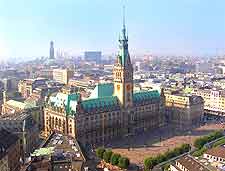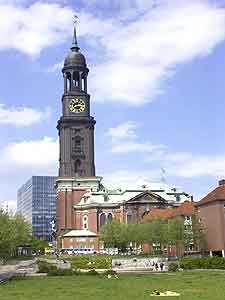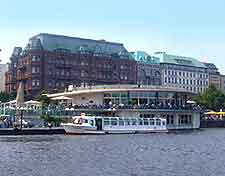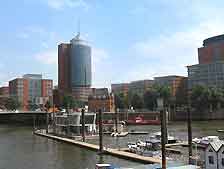Hamburg Neighbourhoods, Locations and Districts
(Hamburg, Germany)

The city of Hamburg is a hectic and lively metropolis, as well as a stylish and comfortable coastal resort at the same time, with much activity focused on the harbour. Hamburg comprises many individual districts and neighbourhoods, and is where Germany's media conglomerates have their headquarters.
The famous St. Pauli red-light district, one of Germany's oldest, also plays its part in attracting outsiders, while the city centre and historic Altstadt district are home to many of Hamburg's main attractions. The most significant districts are explained below.

Altstadt District (Old Town)
Old Town Hamburg tends to be where most visitors spend the majority of their time winding there way through the oldest buildings in the city. Those with an interest in religious architecture will not want to miss the ornate churches of Saint Jacobi, Saint Michaelis, Saint Nikolai and Saint Petri. This is also where you can find the archaeological excavations of the medieval Hammaburg, which will appeal to those wanting to learn more about the history of Hamburg.
Altona District
Before being seized by the Nazis just before the start of WWII, the Altona district was a self-governing city belonging to Denmark. This busy district is one of Hamburg's most populated, making it a hive of activity. Full of charm, it is a melting pot of different cultures and artistic flavours. Fans of architecture will have a field day within this part of Hamburg, with the striking, traditional 200-year-old Palmallè boulevard; the beautiful villas on the Elbchausse and the restored factories making a lasting impression on most visitors. The classical Alton Town Hall dates back to the turn of the 20th century and is a fine example of a building from the Wilhelmenian period.

City Centre
Flanked by the River Elbe and the Alster Lake, the commercial city centre is home to government buildings, department stores, offices and literally hundreds of restaurants, cafés and other eateries. Having been rebuilt after WWII, this district has also become a hub for culture, boasting an opera house, two theatres and the Kunsthalle (Art Hall), all of which are set amid splendid avenues and pedestrian squares.
Eppendorf District
This is an upmarket district very sought after for its fine residential quarters. Characterised by several little rivers that run through the district and stylish houses from the turn of the 20th century, Hamburg's Eppendorf district oozes elegant charm. The Isemarkt is a traditional market located under a viaduct, great for watching rich housewives in refined attire bargaining for a piece of foie gras.

Harbour District
Constituting a significant percentage of Hamburg's overall area, the city harbour ranks as one of the biggest in the world. There are a couple of noteworthy bridges here, as well as the Old Elbtunnel leading under the Elbe River, a major tourist attraction. The red-brick warehouses in the Speicherstadt are used for storage purposes, so don't come expecting the trendy harbour dining scene of some world cities, as this is more of a working port.
St. Pauli District
Quite the opposite to Eppendorf, this world-famous red-light district is the city's most animated area, abuzz with the activity of seedy clubs and appealing bars. A good choice for a night out, the St. Pauli area of Hamburg attracts music lovers to its regular concerts. Certain streets are closed off by partitions, accessible only by adults. The shop windows here display wares of the human kind.
 The city of Hamburg is a hectic and lively metropolis, as well as a stylish and comfortable coastal resort at the same time, with much activity focused on the harbour. Hamburg comprises many individual districts and neighbourhoods, and is where Germany's media conglomerates have their headquarters.
The city of Hamburg is a hectic and lively metropolis, as well as a stylish and comfortable coastal resort at the same time, with much activity focused on the harbour. Hamburg comprises many individual districts and neighbourhoods, and is where Germany's media conglomerates have their headquarters.

